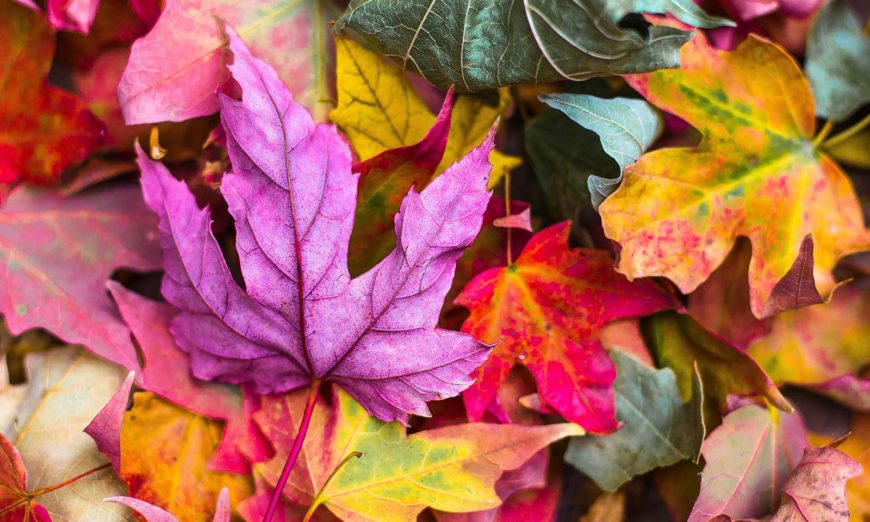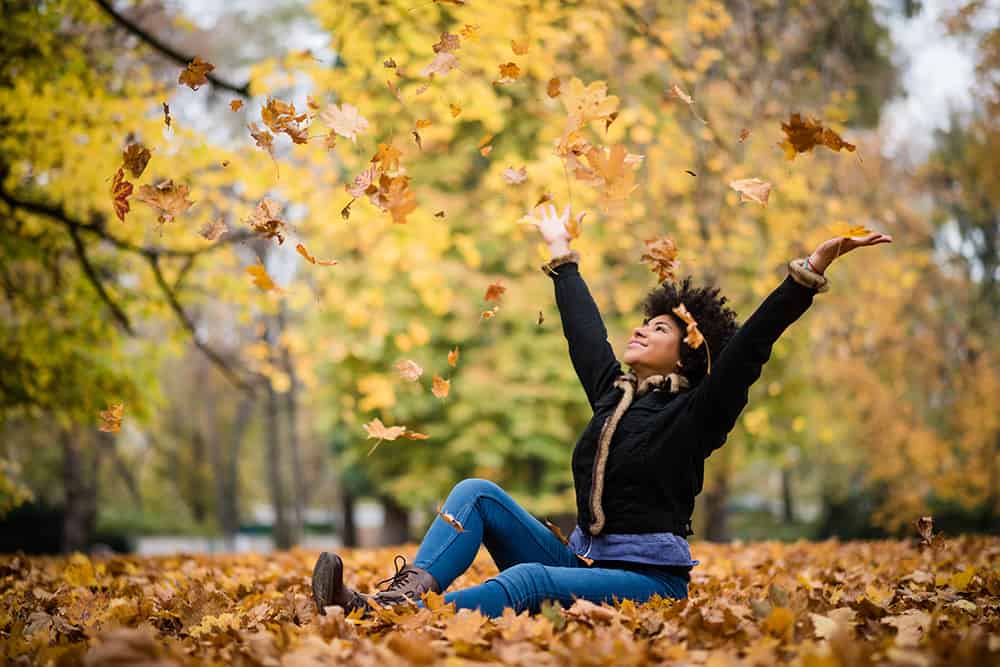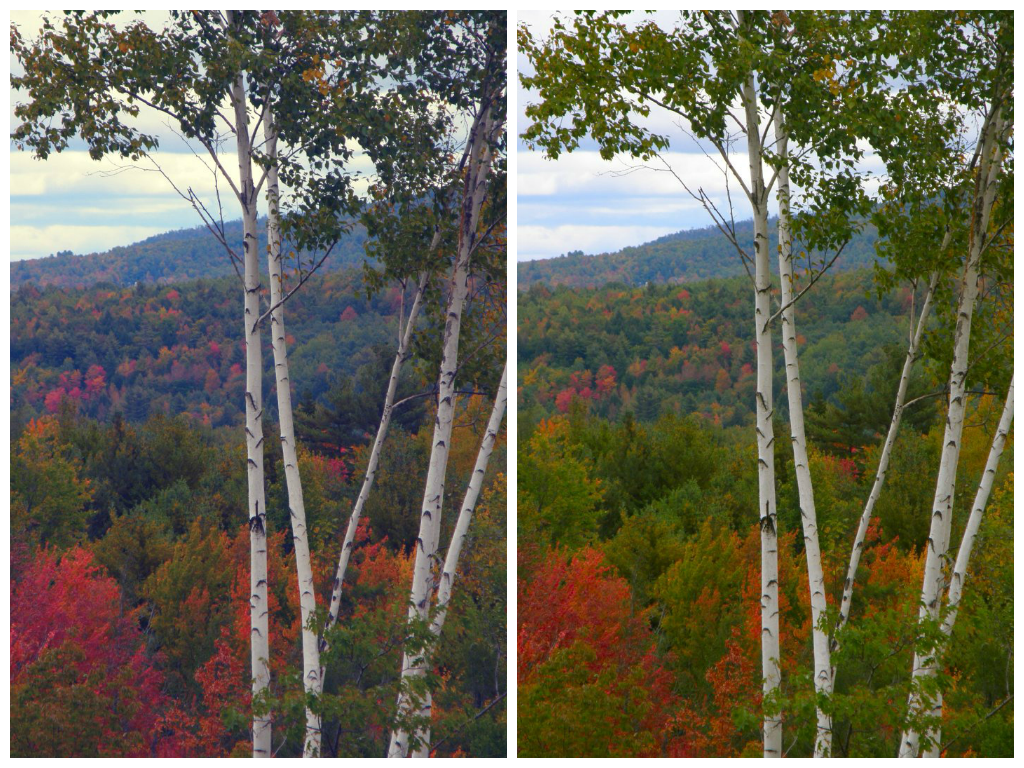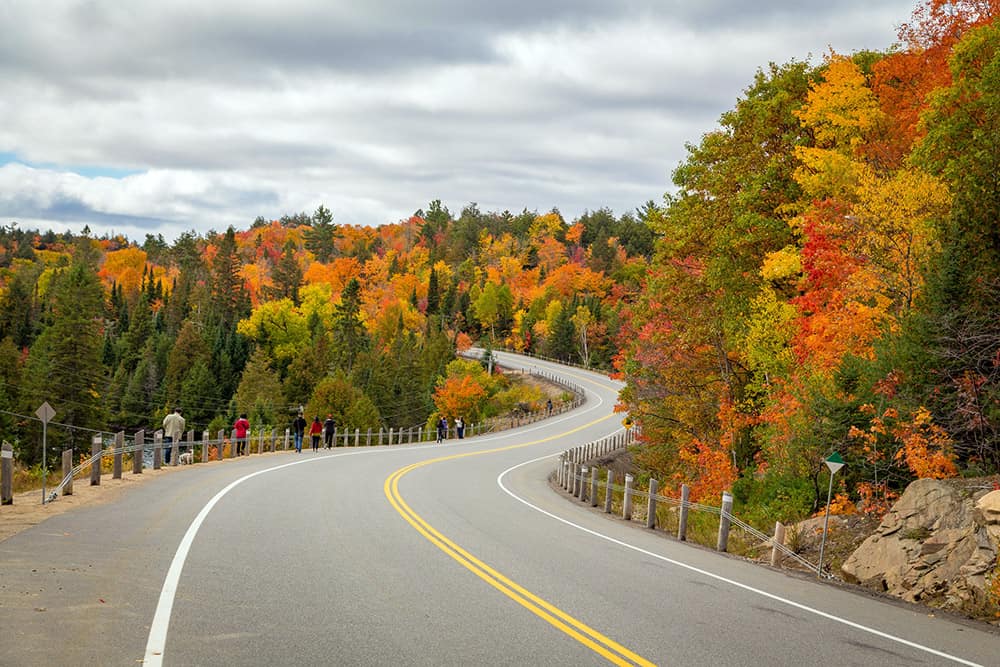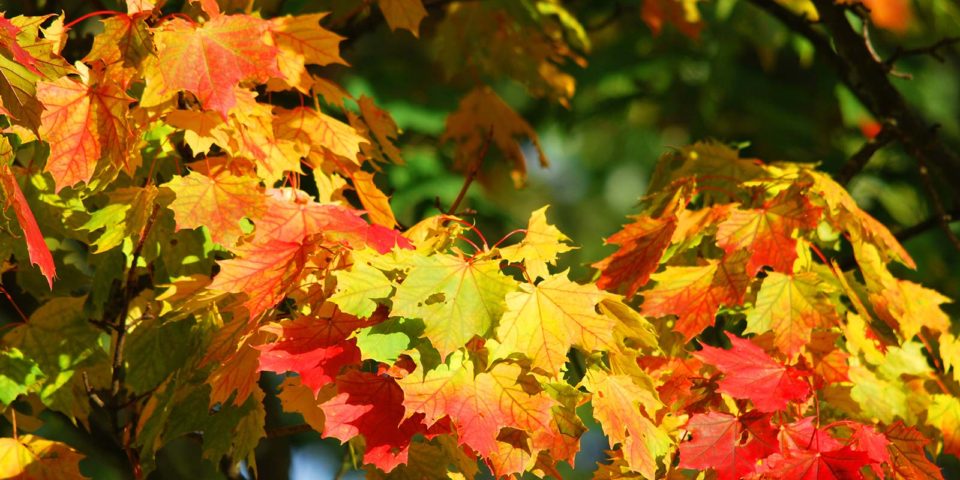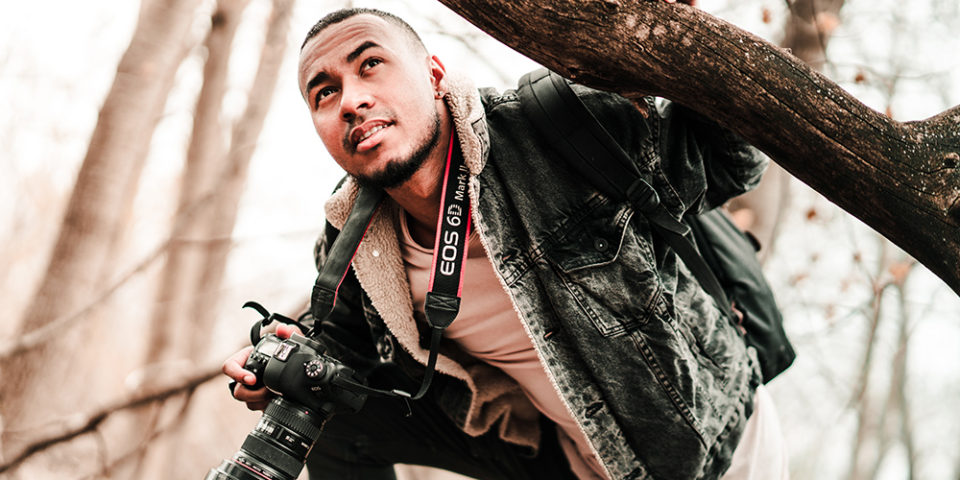The nights are cooler, and the morning air is crisp and invigorating. To the photographer, that can only mean the foliage season has arrived and glorious colour is about to burst forth on trees, shrubs, and plants if it hasn’t already started. It’s a fantastic time of year to be out in nature with your camera. The days are cooler, and most of the bugs are gone. Knowing a few tips will help you capture the true colours of the beautiful foliage season.
Tip #1: White Balance
Understanding white balance settings and how to use them to your advantage will assist you in capturing the brilliance of the autumn colours. When there is an off-colour cast to white objects in your images, the white balance settings need to be adjusted. It is easy to see the off-white colour in the following images.
The human eye adjusts itself and can discern when an object should be white. Cameras cannot adjust automatically like the eye, and you must adjust the white setting manually. Most cameras are preset on the auto white balance setting. While this may work fine in general conditions, strong colours can trick the camera and produce less than satisfactory results. Your camera offers several white settings. Depending on the brand of camera you own, you can choose from incandescent, fluorescent, direct sunlight, cloudy, shade, and flash, and you can even create a one-time custom white setting, which will work for all of the images you capture in a specific light condition. Once you move away from the area, the custom setting will no longer be of value.

Most digital cameras come with the option to manually set or adjust white balance. Your white balance setting can be accessed either in your camera’s menu system or by using a dedicated button labeled “WB” on your camera’s body.
Tip #2: Colour Temperature
The RGB (red, green, blue) primary colours exist in every lighting situation. The proportion of their presence varies, depending on light temperature. Blue light is prominent when a high colour temperature exists. As the colour temperature gets lower, you will see the amount of red colour increase. Green prevails in the moderate range of colour temperature. Your camera may offer the option of selecting the colour temperature. Referring back to the photo of the trees above, you will notice the image on the left has a slightly more bluer look than the image on the right.
Tip #3: Natural Lighting
When you plan your day for shooting foliage images, overcast days can produce much better colour than bright sunny days. Early morning and late afternoon are the only times to shoot foliage images on a bright day, because the sun creates a nice sidelight at those hours. The bright sun of the day will wash out the beautiful colours in your images. Overcast conditions allow for excellent shooting all day long, and provide a soft, even light. Don’t be concerned about the true colours shining through in your images, because autumn foliage colour is saturated and enhanced by grey skies.
Additional Tips
- Still ponds and lakes are ideal for beautiful foliage reflection images
- Soft sidelight can intensify the bright reds, oranges, and yellows of the leaves
- Look for unusual angles to highlight your primary subject
- Try to avoid shooting a straight line of trees
- Shooting foliage after a light rain produces glowing colours
- On a windy day, go for some stunning leaf blur images
- Macro shots of single leaves in unique settings look amazing framed
Nature is at its best in autumn and by following a few simple tips you can capture the beauty in all of its glory!
For more tips on how you can get the best images this Fall, check out these articles:
- How to Take The Best Fall Photos
- Top Tips for Capturing Better Landscape Photos
- Get Ready For Fall Colours
